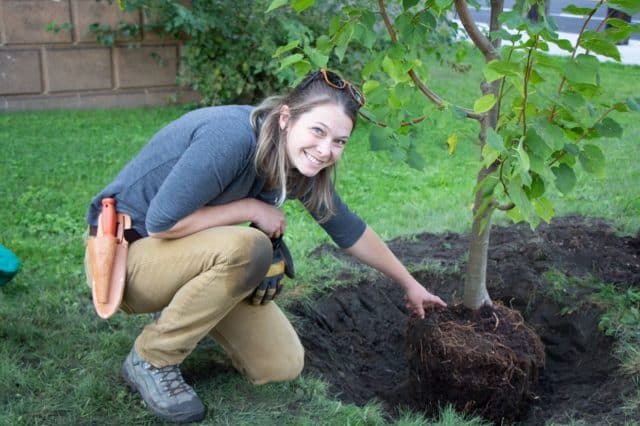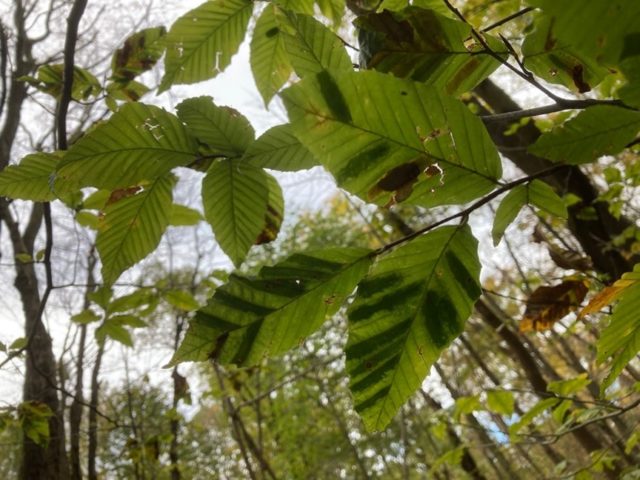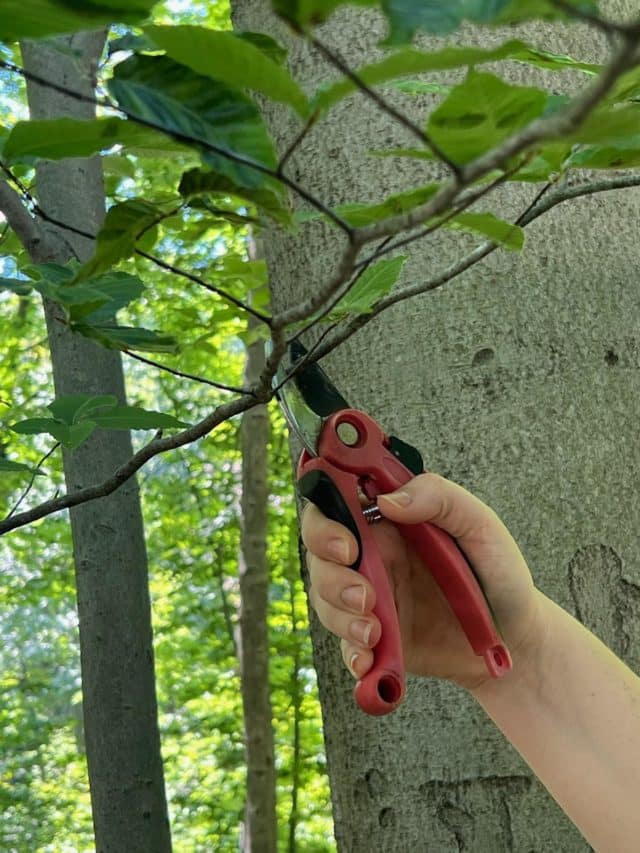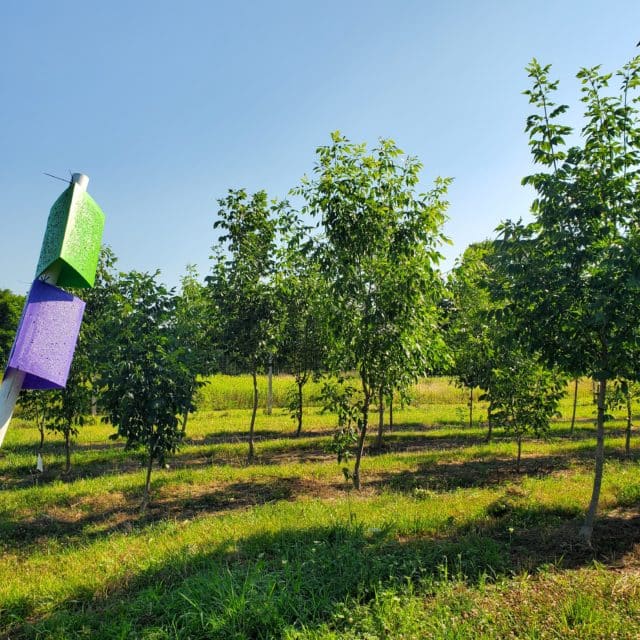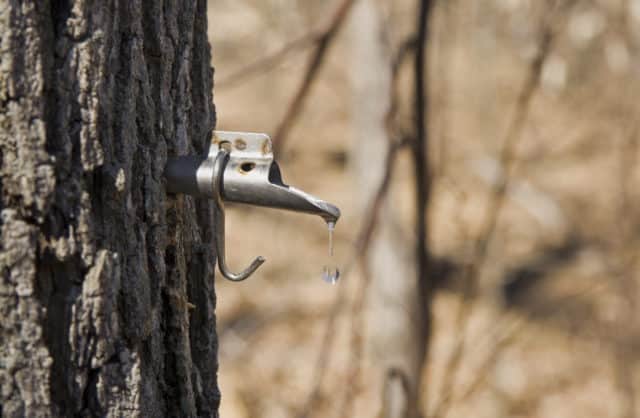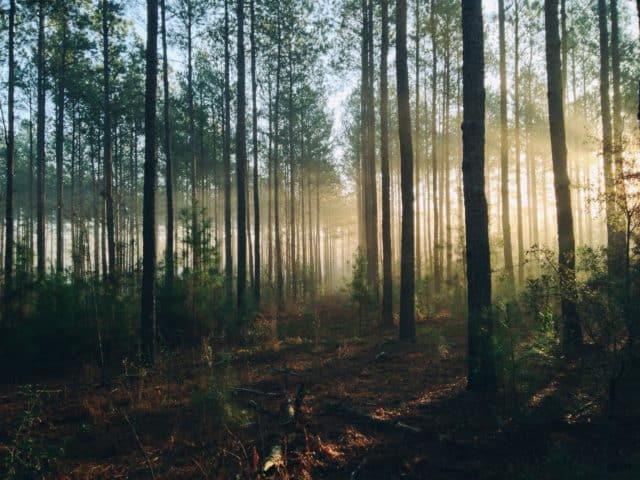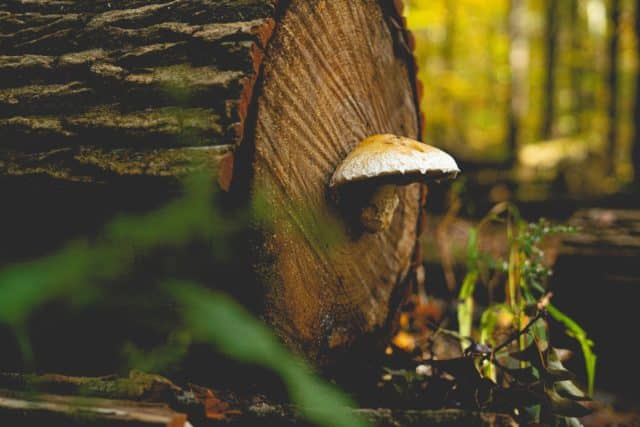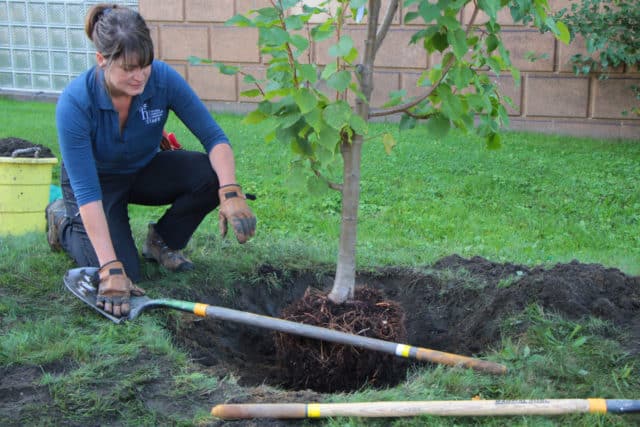
If you know me, I have most likely posed this question to you. If we have not yet met and you are like most of the individuals I’ve conversed with, chances are you haven’t heard or perhaps maybe you are vaguely aware. Either way, let’s change that.
In 1796, Moses Cleaveland landed on the banks of the Cuyahoga River and surveyed the land that would later bear his name (with a slight spelling adjustment). To think about what this land, The Land, must’ve looked like then is the subject of many a daydream I’ve had whilst meandering through the modern day suburbs of our little metropolis. Undoubtedly, Mr. Cleaveland arrived to a vast forest dominated by deciduous hardwood trees. These trees that gave Cleveland its identity as the “Forest City,” these trees that made way for and aided the ensuing development.
In 1946, Cleveland celebrated its sesquicentennial birthday. It had been 150 years since Cleaveland’s expedition into northeast Ohio and Clevelanders were game to celebrate. One of the ways they celebrated was by forming a commission whose objective it was to discover and label 150 trees growing in the county that had estimated ages of at least 150 years old. The significance, of course, being that these trees were older than the city itself. That these trees predated any western colonization of this area. That these trees were remnants of the once vast forest that blanketed this land. That these trees grew up with the city and had borne witness to every single thing that had ever happened in the city and surrounding areas. So they sought out and found 150 trees that fit the bill. And they dedicated them Moses Cleaveland Trees. And that was that.
So here we are in 2021 nearly 75 years after that initial 1946 commission. Some trees have perished, victims of development or disease or storm. Others were added to the list in the 1970s and 80s by the Early Settler’s Association. And still some of the original 150 remain.
So where are they? And how many of these living relics remain? These were the questions in my mind and in the minds of other members of the Forest City Working Group when we met early this year. And there was one way to find out: go look. So this is what we did. Guided by inventory lists that hadn’t been formally updated since last century, I spent my weekends seeking out big, old trees – a veritable tree-sure hunt. I was assigned three areas within Cuyahoga County: Parma, Parma Heights, and city of Cleveland.
Of the 43 on city of Cleveland’s list, I found 18 remaining – seven of which reside on Lake View Cemetery’s grounds. Of the 10 in Parma, three remain. And of the two in Parma Heights, one glorious white oak in a lucky homeowner’s backyard remains. Note: this is a county-wide project. The numbers shared here are only from my assigned areas and are not inclusive of the rest of the county.
The 22 individuals I found break down like this: half, 11, of them are white oaks (Quercus alba). Among trees native to this region, white oaks are some of the most long-lived, which may explain why they dominate the remaining inventory. Some of the oldest white oaks known lived nearly 600 years. With that knowledge, our seemingly geriatric friends may only be middle-aged! Of the other 11 trees, five are black oaks (Quercus velutina), two are tulips (Liriodendron tulipifera), and one of each of the following: American sycamore (Platanus occidentalis), American beech (Fagus grandifolia), red oak (Quercus rubra), and one that was misidentified as a pin oak (Quercus palustris) but is decidedly not a pin oak, but quite possibly a swamp white oak (Quercus bicolor), I am waiting for it to leaf out to verify this.

Quercus velutina Lake View Section 14 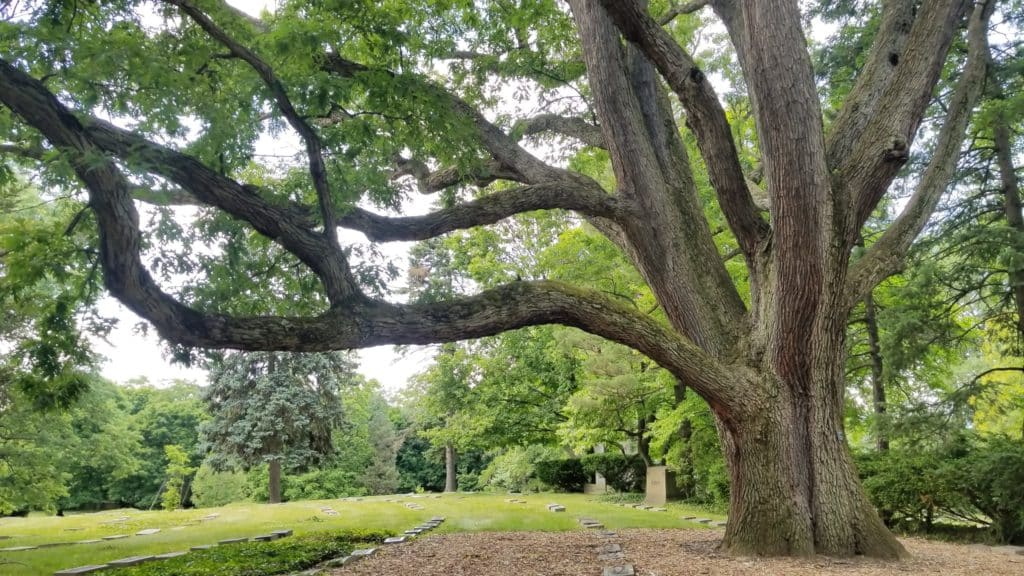
Quercus alba Lake View 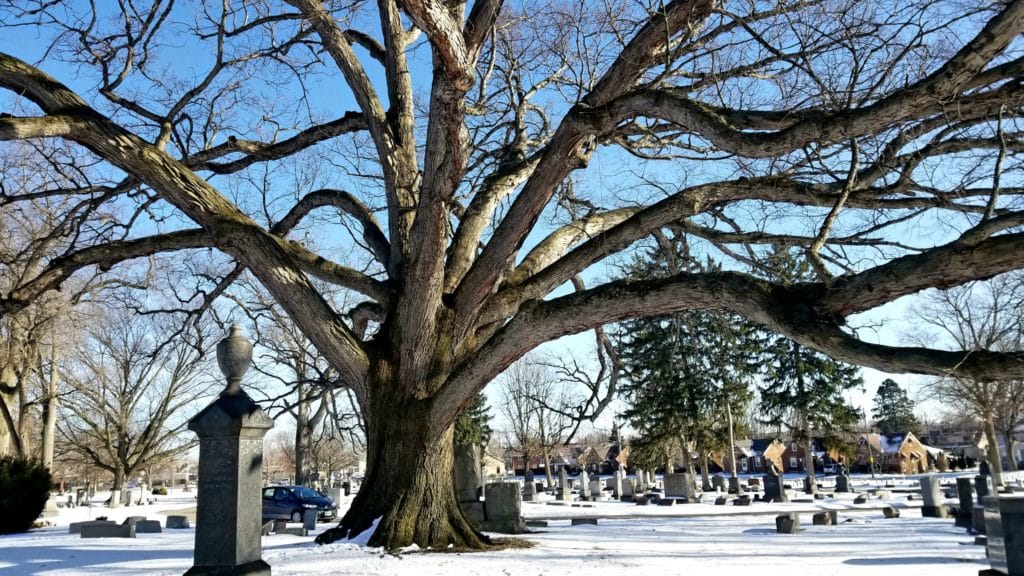
Quercus alba 006 Lutheran Cemetery Cleveland 
Fagus grandifolia Lake View Section 1 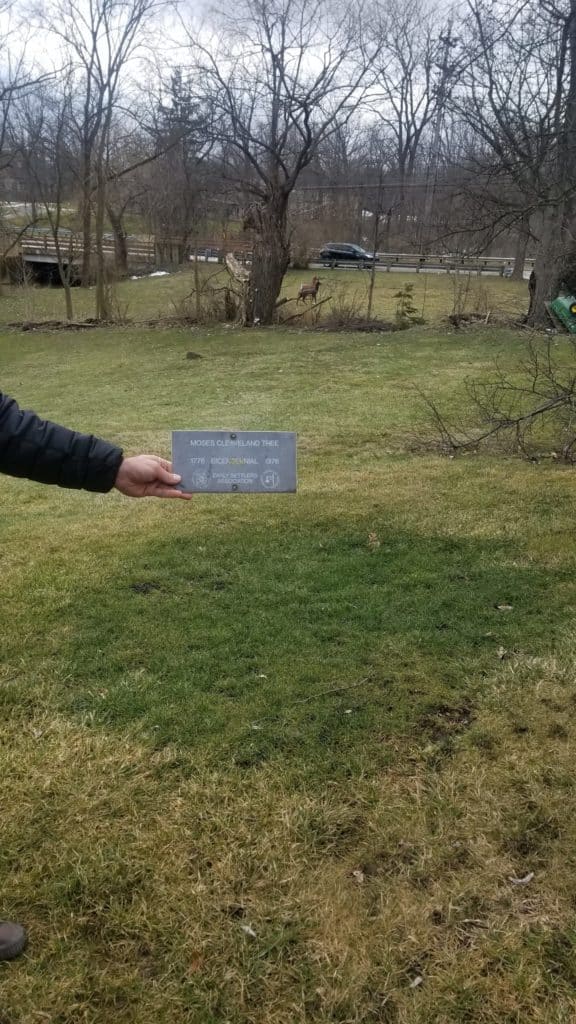
Quercus alba 12987 W Pleasant Valley Dr. sign in front of where tree was 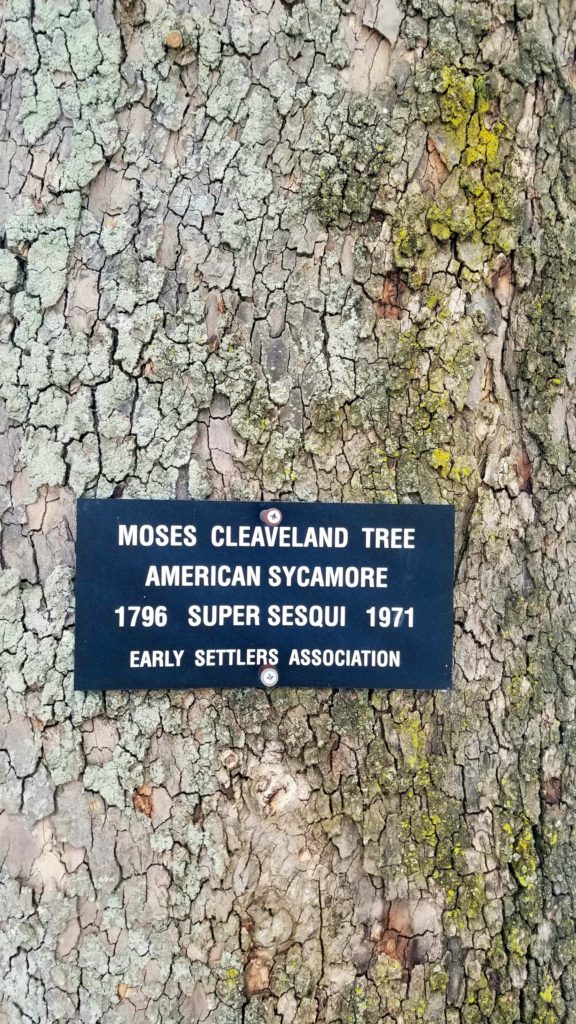
Platanus occidentalis Lake View Section 5a 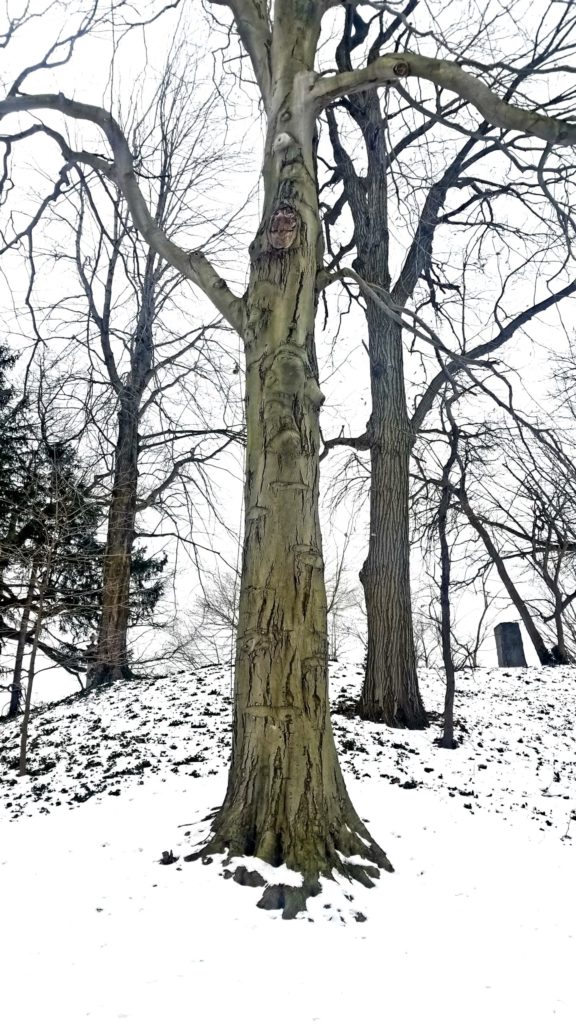
Fagus grandifolia Lake View Section 1 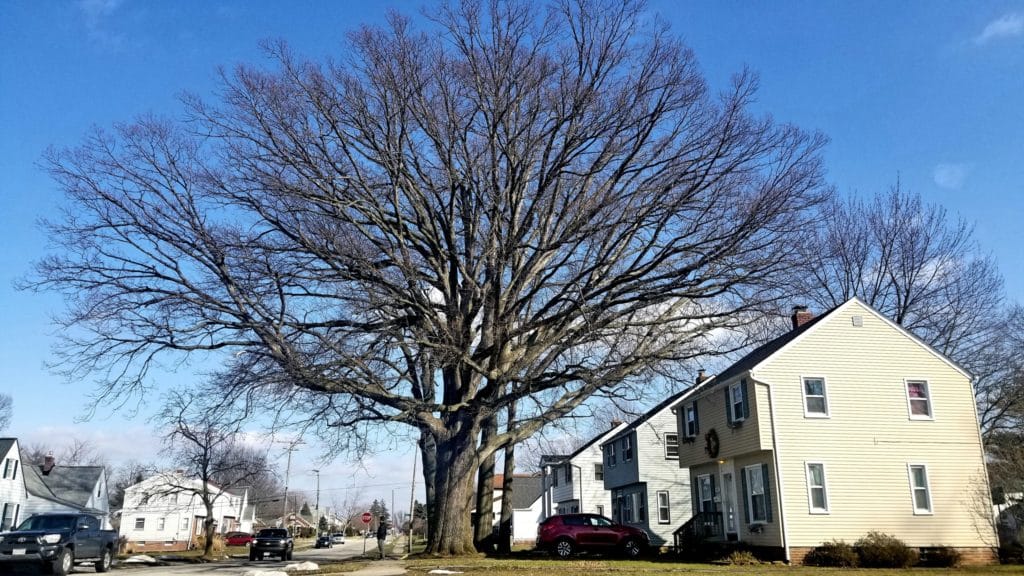
Of course, it is worth noting that age estimates are just that – estimates. Growth rate varies from species to species, individual to individual. While exact age cannot be known unless you count the rings, what is certain is that these are very large, very old trees. And there is something undeniably powerful about being in the presence of such creatures. It is humbling, awe-inspiring and exciting; each tree is a universe unto itself and worthy of the utmost admiration.
If you wish to experience them yourself I recommend going to the Early Settler’s Association’s website where you can find an interactive map to guide you. Here at Holden, we are working closely with this project to update the maps in time for the July anniversary (fun fact: a 225th anniversary is called a quasquibicentennial). I encourage everyone to visit and share the story of the Moses Cleaveland Trees, they are ours to protect and cherish.

Margeaux Apple
Plant Recorder
Margeaux is the Plant Recorder for Holden Forests & Gardens. In this position, she works closely with other members of the Collections and Horticulture teams to ensure the quality of the plant collection and the records kept on it. Margeaux began her involvement with HF&G in 2017 as a volunteer in the Eleanor Armstrong Smith Glasshouse. Prior to involvement with the institution, Margeaux graduated from The Ohio State University with a Bachelor of Science in Environment and Natural Resources
